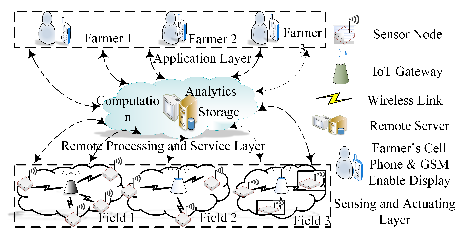Wireless Sensor Networks for Agricultural IoT
In the Indian scenario, the Wireless Sensor Network (WSN)-based farming solutions need to be of very low cost to be affordable by end users. Physical phenomena such as temperature, humidity, and rainfall over an agricultural region can be monitored by a WSN. WSNs for environmental condition monitoring with information of soil nutrients is a promising approach for predicting crop health and production quality over time. Monitoring the soil moisture and weather conditions enables irrigation scheduling. Agricultural IoT involving huge number of sensor nodes, spread all over the agrarian area, and generating large volumes of data requires cloud-framework and edge-level computation.
We propose, design and deploy several architectures for implementing agricultural IoT and study the impact of intensive processing tasks on the network parameters. Additionally, we surveyed WSN deployments for various farming applications in the Indian as well as global scenario. We highlight the prospects and problems in this regard, while identifying the factors for improvement and future directions of work using the new age technologies.







